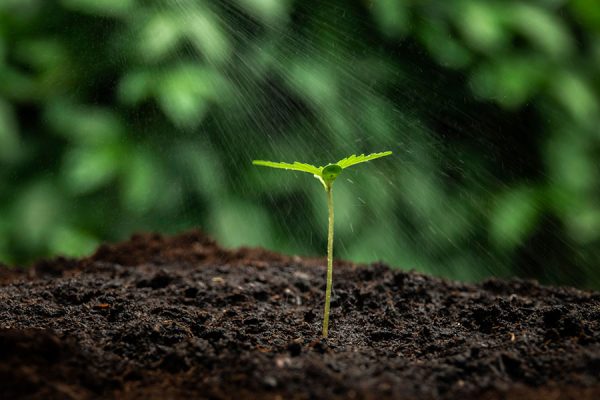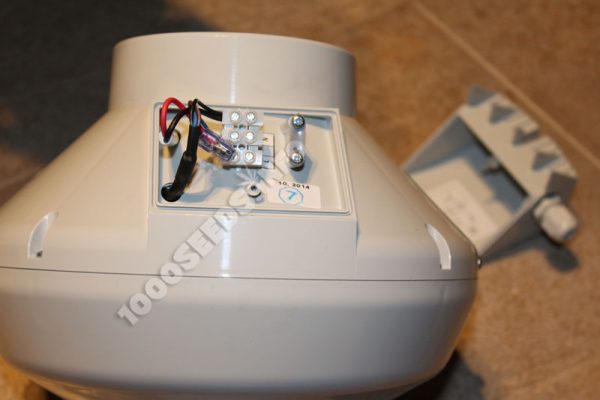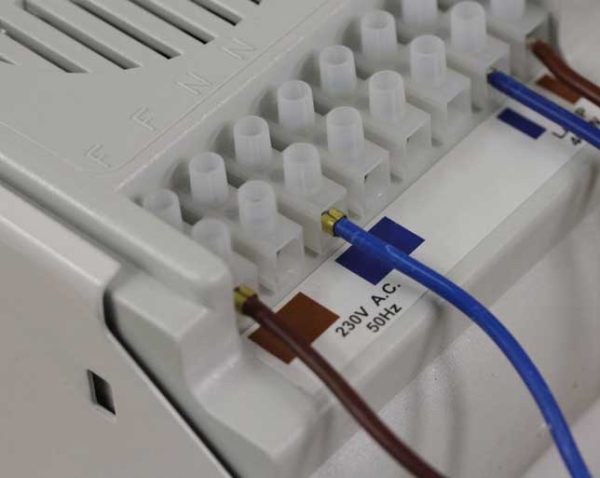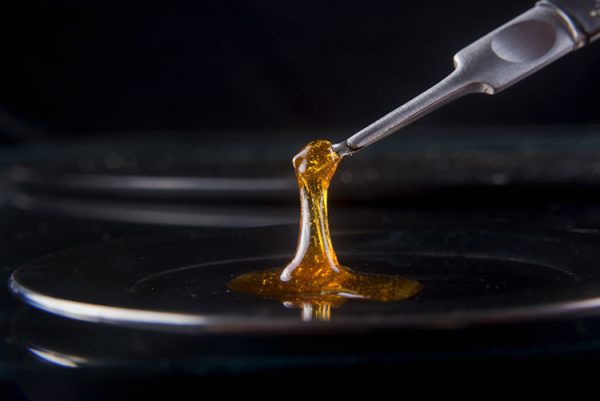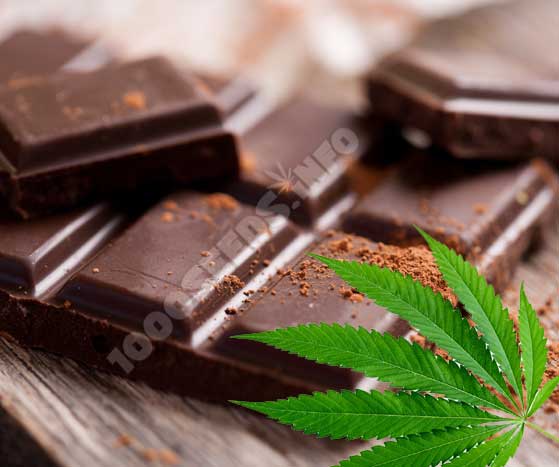Irrigation and watering in cannabis cultivation
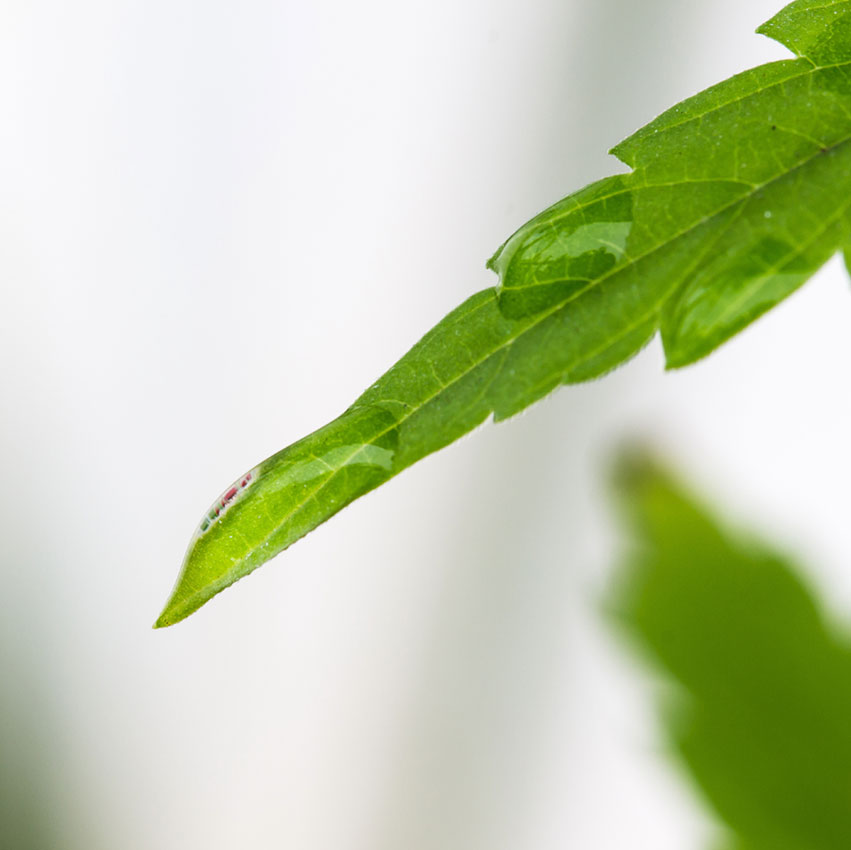
How much water a cannabis plant needs depends on factors such as the age and size of the plant, soil conditions, ambient temperature, pot size, aeration and variety. If there are changes in any of these factors, the plant's water consumption will change accordingly. Sufficient and good ventilation in the grow room plays a crucial role.
Basically, of course, large cannabis plants use more water than small ones and plants in small pots need to be watered more often than those in large planters. Marijuana plants need regular watering once the top layer of substrate has dried.
| It is best to water cannabis plants with lukewarm water between 21-25° degrees, this is what they like best and so the roots are not shocked. Do not water the leaves or flowers, as this encourages mould growth. A plant should be watered as soon as the top 1.5 cm of the planting substrate has dried (not even earlier). With good drainage in the plant pot, it is usually not so easy to overwater. For good drainage, always use cannabis quality soil and fill the bottom layer in the pot (approx. 3 cm) with expanded clay so that excess water can drain away unhindered and ideally. Many cannabis plants need to be watered daily. |
 A Soil moisture meter is very worthwhile and inexpensive to purchase. You no longer have to rely on guesswork, but know exactly how the moisture in the soil is. If you stick your finger into the planting substrate, you can only roughly analyse the moisture. Besides, roots could be damaged. Because of the air pockets in the soil, it always happens that water is not evenly distributed in the pot and dry spots form. A soil moisture meter will tell you exactly what the situation is.
A Soil moisture meter is very worthwhile and inexpensive to purchase. You no longer have to rely on guesswork, but know exactly how the moisture in the soil is. If you stick your finger into the planting substrate, you can only roughly analyse the moisture. Besides, roots could be damaged. Because of the air pockets in the soil, it always happens that water is not evenly distributed in the pot and dry spots form. A soil moisture meter will tell you exactly what the situation is.
| Promote the even seepage and distribution of the water in the pot by carefully loosening the surface of the substrate (approx. 1 cm deep) with a fork or something similar. The heat, fertiliser salts and intensive lighting with a sodium vapour lamp often cause the soil to "cake" and become solid, and the water immediately runs off the edge of the pot and out the bottom again. By loosening the top layer of substrate you can counteract this and ensure that the nutrient solution/water can really reach the roots and be absorbed. Be careful and avoid tearing off the roots. |
When watering, each plant should be supplied with sufficient water so that the entire contents of the planter are well moistened. About 15-25% of the water should run out of the bottom of the pot.

Overpouring/overwatering
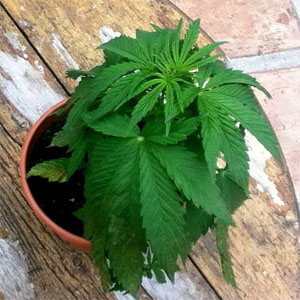 Overwatering is one of the typical mistakes beginners make when growing. If there is too much water in the substrate, the roots will not get any oxygen and will drown. If you tend to overwater plants or find it difficult to estimate the right amount of water, just get yourself a moisture meter.
Overwatering is one of the typical mistakes beginners make when growing. If there is too much water in the substrate, the roots will not get any oxygen and will drown. If you tend to overwater plants or find it difficult to estimate the right amount of water, just get yourself a moisture meter.
Good ventilation of the growing room is fundamentally important for the water balance of the plants. The plants must be able to evaporate water, i.e. to release water into the room air. If the air circulation in the cultivation room works, humid used air is constantly exchanged for dry fresh air. Without this air exchange, the humidity in the grow room would very quickly rise to 100% and healthy plant growth would no longer be possible.
If water has collected under the pot or in the saucer after watering, this should be removed.
| Signs of overwatering: the leaves curl and turn yellow, at the same time the substrate is very wet, growth is slowed down, possibly mould appears. |
Dehydration / lack of water
 Especially small pots (0.25-6 L) dry out quickly and often need to be watered 1-2 times a day. If the substrate dries out too much, the small and sensitive root hairs will be damaged, dry out and eventually die. If the plant wilts due to lack of water and has already let all its leaves droop, it may take some time for it to recover from this shock. Growth may be significantly delayed until new root hairs have grown back.
Especially small pots (0.25-6 L) dry out quickly and often need to be watered 1-2 times a day. If the substrate dries out too much, the small and sensitive root hairs will be damaged, dry out and eventually die. If the plant wilts due to lack of water and has already let all its leaves droop, it may take some time for it to recover from this shock. Growth may be significantly delayed until new root hairs have grown back.
Proceed when the substrate in the pot has completely dried out and become hard:
Add a few drops of biodegradable flushing agent to the water (2 drops for 10 litres). This ensures that the surface tension of the water is broken and that it is distributed more easily and evenly in the substrate. Air pockets where no water can reach are thus avoided. Many fertilisers contain an additive that ensures that the surface tension of the water is broken. 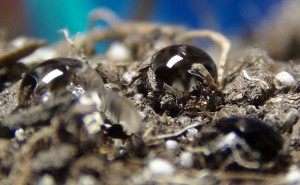 water is taken.
water is taken.
First, pour a small amount of water evenly over the bottom of the pot until the entire surface is wet. Then wait 15 minutes until the water is absorbed by the substrate and distributed. Then add the remaining amount of water that the plant needs.
As already mentioned above, the water consumption of cannabis plants depends on several factors. Therefore, no exact value can be given. Approximately, a grow box with 12 large plants on a cultivation area of 1.5 x 1.5 m in 25 L pots each will probably consume between 35-100 L of water per week. It is easy and not an issue to water small plants, their consumption is low in the beginning. As they grow, cannabis plants consume more and more water and watering becomes more strenuous and tedious. With a garden hose (bucket etc.) and appropriate equipment in the grow room, you can make the job easier.
With a Watering wand you can easily reach remote corners of the grow box without damaging the plants, especially when the plants have already become very bushy. There are many different ways to water cannabis plants on soil. Drip irrigation systems. More on the subject of drip irrigation can be found at here.
More info on the topic of irrigation for cannabis:






